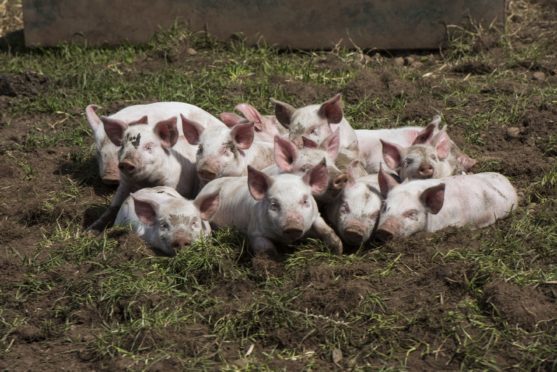A new high-tech solution to the problem of tail biting in pigs devised by Scottish scientists could become an alternative to the controversial last-resort practice of tail docking.
The initiative is designed to drive higher welfare standards on farms and involves a system of 3D cameras which are installed above feeders to detect whether a pig’s tail is up and curly, or held down against the body, which researchers have shown is a sign that tail biting is about to begin.
The research is a link-up between Scotland’s Rural College, Scottish farm technology company Innovent Tech-nology Ltd, pig supply chain partners and the Agricultural Engineering Precision Innovation Centre.
The work was carried out using 23 groups of weaner-grower pigs which were regularly scored for any signs of tail injury and tail biting was stopped as soon as an outbreak was detected.
The work has been published in the scientific journal PLOS ONE.
Lead author Dr Rick D’Eath from SRUC said: “Tail biting results in pain and sickness for bitten pigs and severe economic losses for farmers as infection through tail wounds results in abattoir condemnation of meat. This condemnation alone can cost a producer up to 1% of the carcase value and a loss for the processer of 1% of saleable carcase from the pig. There are also unquantified on-farm costs as a result of the increased labour and veterinary treatments resulting from an outbreak.
“Tail docking of piglets is partly effective at reducing tail biting in later life, but is seen as an undesirable mutilation and its routine use is banned in the EU.”
The work is to be developed in a follow-on Innovate UK-funded project called “TailTech”, which will collect data from more diverse pig farms and develop and test a prototype early warning system.
Other pig supply partners will also be involved, including pig breeders JSR Genetics, engineers David Ritchie Ltd, pig vets Garth Pig Practice and farmers’ cooperative
Scottish Pig Producers.
Grant Walling, director of science and technology at JSR Genetics, said: “We recognise that tail biting impacts on animal welfare, farm productivity and pork quality. Any tool that can help reduce or eradicate the problem is a benefit to the whole supply chain.”
nnicolson@thecourier.co.uk
